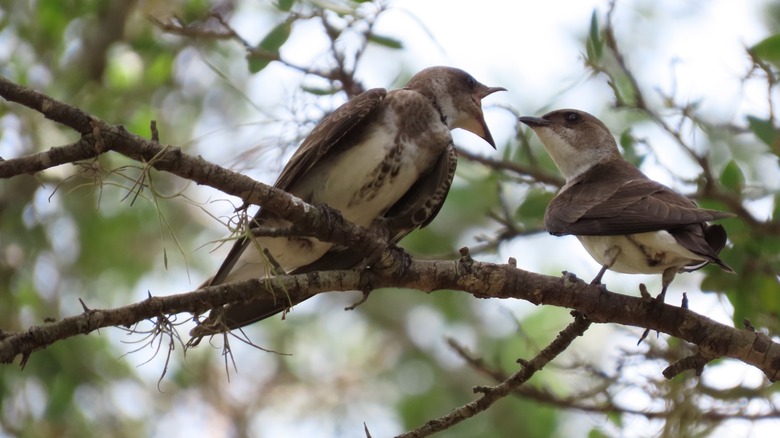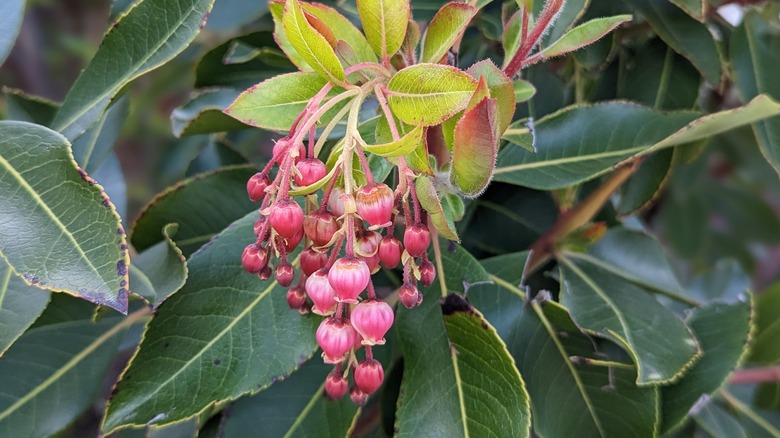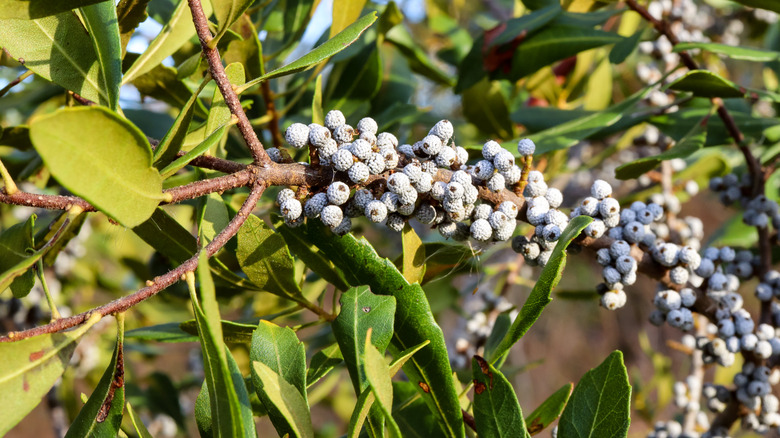The Plants That Are Most Likely To Bring Swallows To Your Yard
If you want to attract swallows to your garden, it helps to know that certain plants like bayberry and wax myrtle can act as magnets for the agile flyers. These plants are not only visually appealing but also provide a plentiful food source for swallows, particularly the tree and violet-green types. However, while these plants are a key attraction, there is more to making your garden appealing to swallows. Swallows are excellent insectivores, primarily feeding on mosquitoes, ants, and flies. In addition to their feeding habits, they also offer a natural defense against bothersome insects like aphids that often infest gardens. So, by attracting swallows, you not only provide nourishment for the birds but also benefit from their organic pest control services.
While the pest control aspect is a significant advantage, swallows also contribute to the overall well-being of your garden. As they zip around your space, they inadvertently become pollinators for some of your plants. Although they are not traditional pollinators like bees or butterflies, their activities can lead to increased crop yield and more robust and easy plant growth. So, attracting swallows to your garden offers these benefits and more. The more comfortable and welcome the birds feel, the more they are likely to visit your garden and contribute to its ecosystem.
The attraction of bayberry
Extending your list of swallow-friendly plants to include bayberry offers multiple benefits for the birds and enhances the aesthetic and functional value of your garden. Native to North America, bayberry is quite an adaptable shrub, making it a low-maintenance choice for most gardeners. What sets bayberry apart from other shrubs are its small, grayish-white berries, which are adorned with a waxy coating. This waxy coating has cultural significance as it is traditionally used for crafting bayberry candles.
For tree swallows, the value of bayberry lies in the nutrition-packed berries themselves. During the winter when insects are scarce, these berries become a lifesaver for the birds. Filled with fats, they provide a much-needed energy boost for swallows, making your garden an attractive stopover. Swallows often search for alternative food sources in the colder months, so having bayberry in your garden increases the likelihood of these birds becoming regular visitors.
In addition to being a bird banquet, bayberry enhances your garden's sensory experience. Its aromatic leaves and berries add a distinctive and pleasant scent to your outdoor space. Moreover, bayberry is not a fussy plant and performs well in various soil types, including sandy, loamy, and clay soils. It particularly thrives in well-drained, acidic soils. This adaptability makes it easy to incorporate into different garden settings without the need for extensive soil amendments.
The allure of wax myrtle
Wax myrtle is an irresistible plant for swallows. Native to the southeastern United States, this versatile evergreen shrub has aromatic leaves and small, often overlooked flowers. However, it is the fruit that truly attracts swallows. Like bayberries, the small nutlets of wax myrtle develop a waxy coating and mature to a purple color, capturing the attention and taste buds of birds like tree swallows and violet-green swallows. These nutlets provide sustenance for the birds year-round, unlike other food sources that may only be available seasonally.
The suitability of wax myrtle for nest boxes adds another layer of attraction. Both tree swallows and violet-green swallows are known to use nest boxes, so planting wax myrtle near these birdhouses can transform your garden into a paradise for these birds. By providing not only a roof over their heads but also a stable environment where they can raise their young, your garden becomes a preferred location rather than just a chance landing spot. The swallows can eat, rest, and build a family without having to venture far. Additionally, wax myrtle thrives in various soil types and is tolerant of both drought and flooding, making it an easy-to-maintain addition to your garden. Its resilience to different environmental conditions ensures the plant's survival and contributes to its year-round appeal to swallows.


